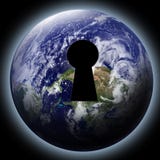

Army’s Communications Electronic Command and the Department of Defense. Keyhole’s main customers when it was acquired were the U.S. That’s really the extent of what I’ve said publicly, so let’s leave it at that,” he told me with a grin.
.jpg)
When I asked Hanke a few years back what he did in foreign affairs, he wasn’t exactly forthcoming. The company was headed by John Hanke, who prior to receiving his MBA from Berkeley in 1996 worked in a nondescript “foreign affairs” capacity for the American government in Washington and Indonesia. Keyhole was initially funded by Sony in 2001 and then backed by In-Q-Tel, a venture capital firm started in 1999 by the CIA to provide the intelligence agency with state-of-the-art spy technology. government’s Landsat program and other commercial sources to create three-dimensional maps of the world. spy satellites, Keyhole’s main product was its Earth Viewer 3D software, which used satellite imagery bought from the U.S. The bigger deal, however, was for Silicon Valley start-up Keyhole.

The first was Australia’s Where 2 Technologies, started by Danish brothers Lars and Jens Rasmussen, who had created a downloadable mapping program. Google’s transformation started in earnest in 2004 with two acquisitions. Ultimately, the same thing will happen-using Google on a computer will account for only a small part of how we interact with the company overall. But with that computing power and data increasingly getting up off computers and melting into the real world, it makes all kinds of sense for the company to follow along. Google started as something that resided on that desktop, a tool to organize the data being created by the computing happening on the ephemeral Internet. It won’t be long before that traditional computer is responsible for only a minority of the computing we do. In this reality, the desktop computer-the device that used to hold a monopoly on computing-is looking more and more like an antiquated relic. The world is barreling headlong into a ubiquitous computing reality, where everything around us-from the walls of the buildings we live and work in to the vehicles we drive to the clothes we wear-is being connected and informed by data. Or, more specifically, a location company. Search is now merely the plumbing for what Google really is: a maps company. We all think of Google as a search engine, but over the past few years the company has been transitioning into something far bigger and more important.


 0 kommentar(er)
0 kommentar(er)
